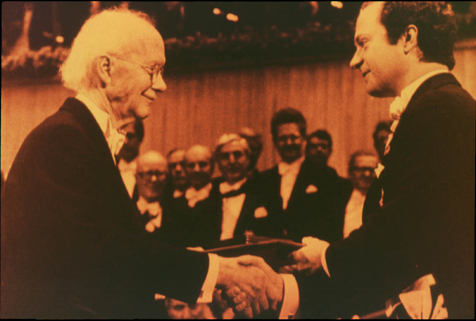
Faculty Research 1980 - 1989
Genetic differences in effects of food restriction on aging in mice.
Document Type
Article
Publication Date
1987
Keywords
Animal, Collagen: ph, Food-Deprivation: ph, Genotype, Hair: gd, Hybridization, Kidney: ph, Longevity, Male, Mice, Mice-Inbred-CBA, Mice-Inbred-C57BL, Motor-Activity: ph, Obesity: fg, pp, pa, SUPPORT-U-S-GOVT-P-H-S, Wound-Healing
First Page
376
Last Page
382
JAX Source
J-Nutr. 1987 Feb; 117(2):376-82.
Grant
AG01755, AG00594, DK25687
Abstract
Lifelong food restriction to two-thirds of normal ad libitum consumption extended mean and maximum life spans more than 200 d in male B6CBAF1 hybrid mice, already a long-lived genotype. The following biological systems were improved by food restriction, with values for older mice being similar to those previously found for younger individuals: tight wire clinging, a measure of neuromuscular performance; open field movement, a measure of voluntary activity; tail tendon denaturation rate, a measure of collagen solubility; urine concentrating ability, a measure of renal function, and hair regrowth rate, a measure of the frequency of hair follicle cycling. However, wound healing was slower in food-restricted mice than in ad libitum-fed controls. The same food restriction treatment had entirely different effects on longevities of a different genotype, male B6 (C57BL/6J) mice, reducing mean and maximum life spans 265 and 27 d, respectively. This surprising deleterious effect was not predicted by tests of tight wire clinging, open field movement and tail tendon denaturation, but was predicted by hair regrowth rates, as these were lower in restricted B6 mice than in fed controls. In genetically obese (ob/ob) B6 mice, food restriction extended mean and maximum longevities 327 and 440 d, yet no biological systems tested performed better than those of food-restricted normal (+/+) mice whose life spans were reduced. Thus the food restriction regimen that increased longevities for individuals of two genotypes decreased them for individuals of a third genotype tested in the same set of experiments.
Recommended Citation
Harrison DE,
Archer JR.
Genetic differences in effects of food restriction on aging in mice. J-Nutr. 1987 Feb; 117(2):376-82.

